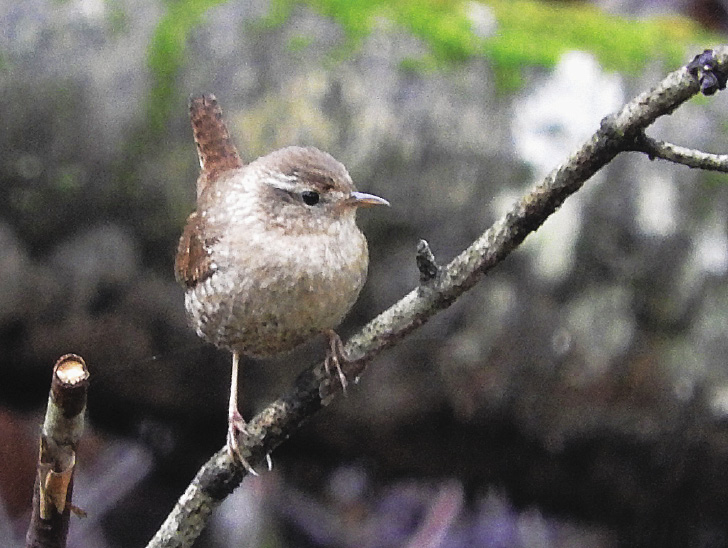I love floating on a calm lake in canoe country just as the rising sun swirls away the wisps of fog. In May, the morning will be cool, but not quiet. Each day, new voices join the dawn chorus as migrating birds arrive from the south. The piercing whistle of the white-throated sparrow carries for miles across the hilltops. The soft che-bec of a least flycatcher slyly invades your subconscious. There is no such subtlety in the call of a winter wren.
His clear stream of tinkling notes blasts across still water with outsized power. This four-inch-long, one-half-ounce, drab-brown bird of the forest floor can sing with 10 times more power than a crowing rooster per unit weight. By bellowing his notes on both the inhale and the exhale, this little guy can extend his brash song to a full eight seconds.
Perhaps he’s compensating for something. In contrast to their song, winter wrens’ appearance isn’t big or flashy. These tiny, well-camouflaged birds spend their time scurrying through the underbrush with mouse-like hops. The scientific name of the winter wren (Troglodytes hiemalis) means winter-loving cave-dweller, but their caves are hollows and cavities in dead and fallen trees. If it wasn’t for photographers with long lenses and longer patience, I wouldn’t know that the little brown blur sometimes congeals into a short, perky, twitching tail, and that they have tiny, white checkers on their brown background, a white eyebrow, and light-brown legs.
I grew up hearing house wrens in Iowa. I also enjoyed listening to canyon wrens during trips to southeast Utah. There are 10 species of wrens in North America. I first discovered the song of the winter wren while working for the Forest Service in the Boundary Waters. A particularly vociferous male had a territory on Seahorse Lake, which is one we often traveled through to clean campsites on Gillis and Paulsen. I came to expect his ringing song whenever we paddled past that swampy forest, although I never once caught a glimpse of the songster and his jaunty tail.
I took those memories with me when I moved to the redwoods of California. So when that same clear stream of tinkling notes erupted from the tangle of brush along a shady creek, it felt like a warm welcome. If I were a lady wren, though, his song would not have been so enticing. The winter wrens in California sing a slightly different song than our eastern wrens. Humans can decipher the two accents with the help of sonograms, but the female wrens have no trouble using their ears.
Where the two populations find themselves as neighbors in eastern British Colombia, the male wrens will respond to any wren’s song with territorial aggression, but the females only mate with males who sing the right song. The females are choosey enough to keep the eastern and the western types from mating, even though they could produce viable offspring if they tried. It seems a bit tenuous, but it is a strong enough divide that in 2010, scientists classified the birds as separate species: the Pacific wren and our winter wren. At the same time, scientists split off a third species of winter wrens that are now called Eurasian wrens.
I’m happy to be living back in the Midwest again. Seahorse Lake has since been changed by fire, but plenty of other lakes still enjoy the ringing call of a winter wren at dawn. The winter wren’s range extends from Canada into the Arrowhead region of Minnesota, and most of the way through Wisconsin. One pair with a crowing male sets up shop along my driveway every spring. They are welcome neighbors.




